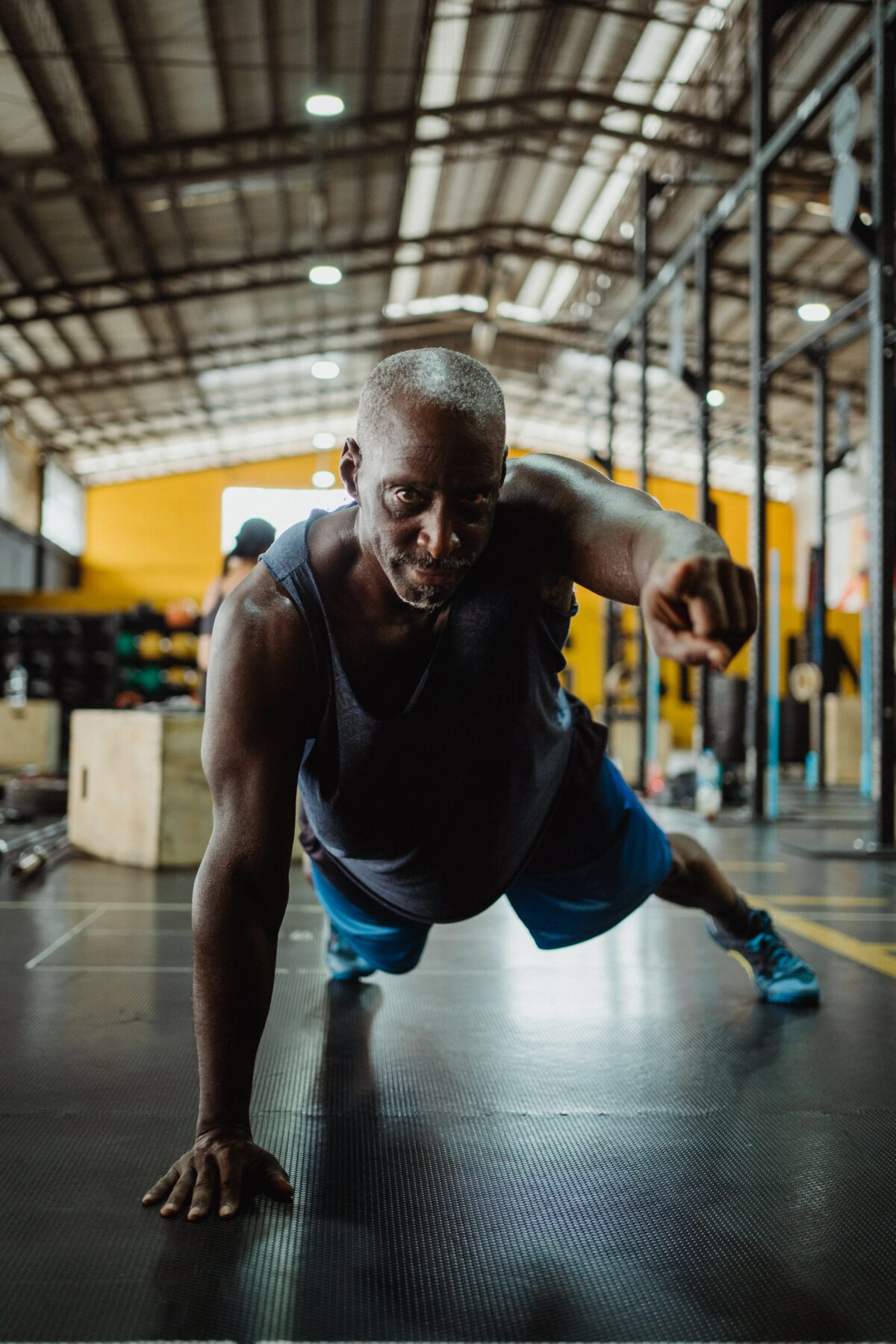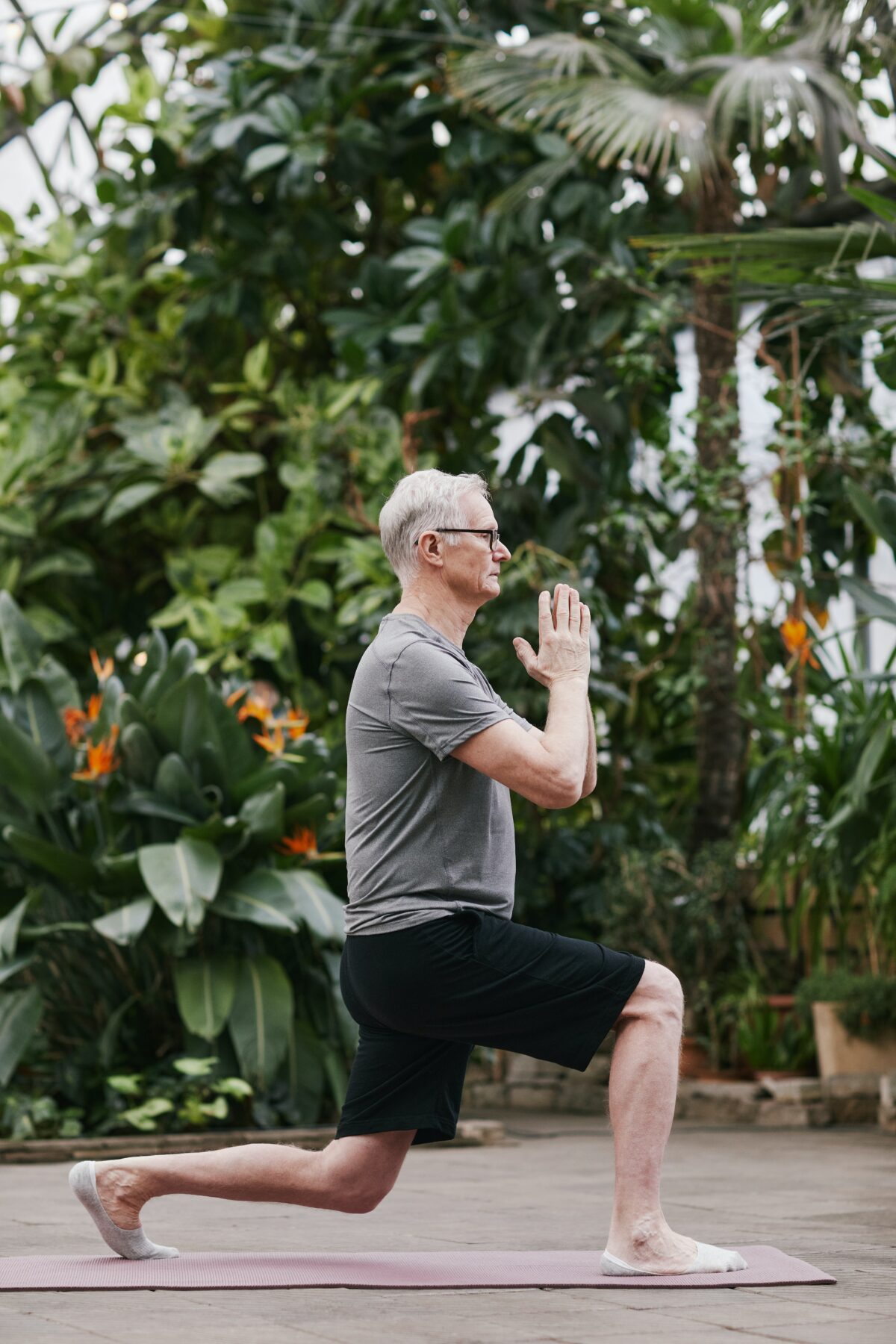Fitness For Men After 40

My patients always tell me, “Don’t get old,” to which I reply, “It beats the alternative.”
Part of the aging process is accepting the fact that we’ll lose some of our youthful physical prowess. I turned 40 this year and have been slowly coming to terms with this. The gradual changes are beginning to catch up with me as I notice aches and pains that seemingly appeared out of nowhere.
The good news is that although we can’t avoid aging, we can stave it off with lifestyle changes. For the men, this is what you can look forward to (or are going through now):
- Sarcopenia (age-related muscle atrophy): After age 30, you may lose up to 1% of your muscle mass per year with some men losing up to 50% by their 80s.
- Testosterone decline (hormone thought to regulate muscle mass, sex drive and fat distribution): Similarly, and likely related to sarcopenia, testosterone can decrease at a rate of 1% per year starting between ages 30-40.
- Decrease in flexibility and mobility: Flexibility is dependent on the ability of a muscle to stretch at a joint. Mobility, however, is the ability of a joint to move freely based on strength, coordination and tissue health — all of which decrease with age.
- Increased Recovery Time: Studies suggest a decline in recovery rate starts at about 40 years old.
- Increased Injury Rate: Likely a result of those listed above; this is a loss of muscle mass, decrease in tissue extensibility and decrease in flexibility and mobility.
Luckily, lifestyle changes can help slow down these processes. Most of us will need to modify one, or all, of the big three: physical activity (strength training), rest and recovery (sleep), and diet.
Physical Activity
The only way to combat sarcopenia is to exercise. I prefer strength training and am a firm believer that a strong body is a resilient one. Not only can you move couches and refrigerators with ease, but you’ll recover from injuries and illnesses faster.

Regarding exercise, keep it simple! To maximize your time and effort, perform exercises that require compound movements. Some of the best exercises are squats, deadlifts, bent-over rows and bench presses. This is because they target all the big muscle groups.
You also need a plan. A quick Google search for a “5×5 strength program” is a great place to start. There are numerous spreadsheets online that are plug-and-play. Many of these programs only require a commitment of three training sessions per week. Research suggests that resistance training will boost your testosterone levels, too!
If you’ve never performed these movements, reach out to a physical therapist or personal trainer. They can assess your movement patterns and make appropriate adjustments so you don’t get injured. If you have a movement dysfunction or limitation, this is the perfect time to address them. On the days you’re not training in the gym, you can incorporate mobility exercises at home. Improving your mobility allows you to move better, in and out of the gym.
“Use it or lose it” has never been more true. Just like your strength training, you’ll need a plan and will have to start slow. If you wanted to run a marathon, you wouldn’t expect to run 26 miles on day one. Use that same mentality in your strength and mobility training.
Rest & Recovery
Your body will be sore the first week or two. You’ll be tired, but you’ll sleep great! Just make sure you’re getting enough of it. Growth hormones are released while you sleep, which will aid in muscle tissue growth and recovery. For a 40-year-old male, the magic number is between 7 to 9 hours of sleep. Don’t skimp on it!
Diet
Closely related to sleep is diet. You need to fuel your body! In order to build muscle, you’ll need protein. How much? About 1.2 to 1.6 grams per kilogram of body weight. That means if you’re 200 pounds, you need to eat 109 to 145 grams of protein. What does that look like?
- One 8-ounce skinless chicken breast has about 54 grams of protein.
- Two eggs (yolk included) have about 12 grams of protein.
- One can of tuna fish has about 20 grams of protein.
- One cup of Greek yogurt contains about 17 grams of protein.
- One scoop of protein powder contains about 25 grams of protein.
Protein is only one piece of the diet puzzle. I recommend seeing a professional nutritionist or dietician to create a plan that will take all your macro and micronutrients into account.
–
What are you waiting for? The best time to start is now, and remember to keep it simple! You’ll be more likely to stick to it that way. And let’s not forget the added bonus of feeling great and confident as we continue to age. Your body, and mind, will thank you!
About the Author

Mark Denesha, PT, DPT is the owner of Forever Forward Physical Therapy — an Austin-based fully equipped mobile PT clinic. FFPT services include manual therapy, strength training and injury recovery, when and where you need it. Denesha’s collegiate sports and military background, combined with his curiosity for movement, have influenced his treatment style, which prioritizes strength and function.






